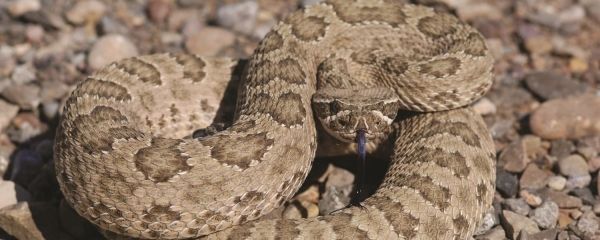The research, which was led by Caleb Phillips of CU Boulder and Grant Lipman of the Stanford University School of Medicine, examined 20 years of snake bite data from across California. Their findings contradict a popular theory among many wilderness health professionals that drought might increase snake bites by pushing the reptiles out into the open where they are more likely to run into people.
Instead, the group discovered that for every 10 percent increase in rainfall over the previous 18 months, cases of snake bites spiked by 3.9 percent in California’s 58 counties. In other words, while rattlesnakes may not sing in the rain, they seem to bite more when the climate gets wet.
The results could have implications for efforts to prevent and treat dangerous encounters between humans and snakes—especially as climate patterns shift across the western United States.
“This study shows a possible unexpected, secondary result of climate change,” said Phillips, an adjunct assistant professor in CU Boulder’s Department of Computer Science. “We probably need to take climatological changes into account when we coordinate systems that may seem unrelated like planning how we distribute antivenin supplies or funding poison control centers.”
Continue reading at University of Colorado Boulder
Image via University of Colorado Boulder


